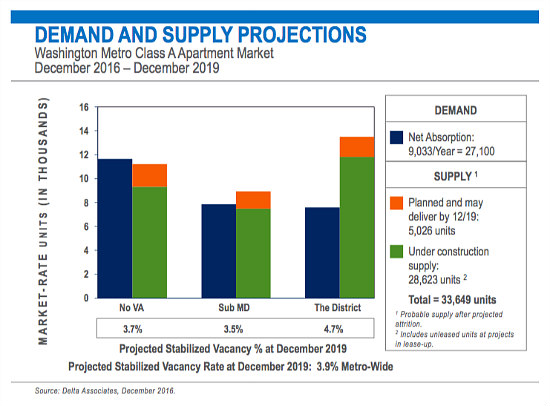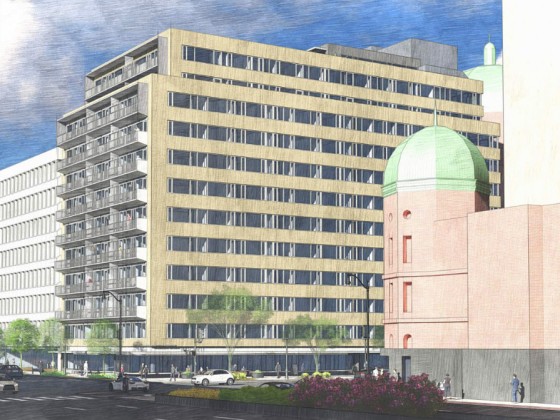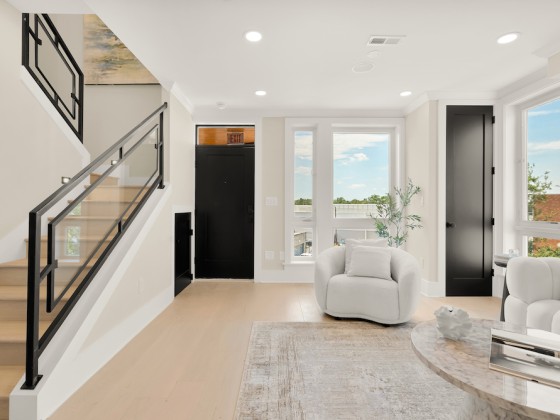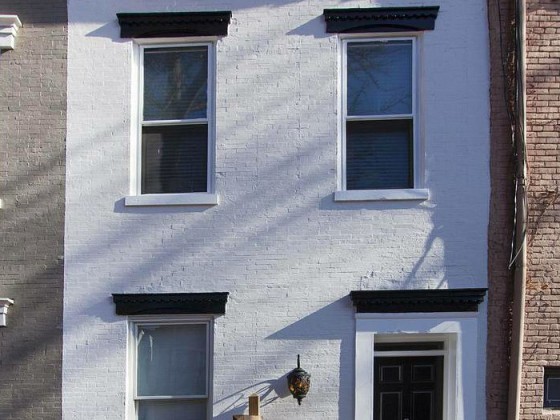What's Hot: Douglas Development Files PUD For Large Warehouse At New City Site Along New York Avenue
 Class A Apartment Absorption Dropped Off in the DC Area in the Final Quarter of 2016
Class A Apartment Absorption Dropped Off in the DC Area in the Final Quarter of 2016
✉️ Want to forward this article? Click here.

A new rental building at 5333 Connecticut Avenue NW.
Last October, UrbanTurf noted that Class A apartment absorption was still going strong in the DC region but was showing signs of slowing. A new report from Delta Associates indicates that this slowdown is underway, with absorption dropping off in late-2016 after seven consecutive quarters of growth.
“While job growth is strong and supply remains plentiful, the wave of new Millennial households that helped the region absorb a record 13,429 apartments in calendar year 2015 appears to be slowly subsiding,” the report explains. “Between now and 2019, the vacancy rate likely will rise to nearly 5% as the level of deliveries remains elevated in the short term.”
story continues below
loading...story continues above
Overall, annual absorption in DC proper was down 25 percent compared to the year before, but increased in the Upper NW (22%), Capitol Hill/Riverfront/SW (43%) and Northeast (52%) sub-markets. Rents were also up in all except one DC submarket (Upper Georgia Avenue); however, this is expected to be kept in check by the projected delivery of over 10,000 apartment units over the next two years.

The drop in absorption is in line with reports in a Washington Post article from late-2016 that the flood of young professionals to the city is slowing.
“Washington saw a net increase of roughly 2,300 new residents from other states between July 2015 and July 2016, the Census Bureau reported in its year-end population estimates,” the Post article stated. “The figure marked a steep drop-off from five years ago, when net migration to the city from other parts of the United States exceeded 7,000.”
Here is a quick snapshot of average rents for high-rise Class A apartments in DC area sub-markets, as defined by Delta:
Note: The rents are an average of studios, one and two-bedroom rental rates at new buildings in the DC area.
Definitions:
Class A apartments are typically large buildings built after 1991, with full amenity packages. Class B buildings are generally older buildings that have been renovated and/or have more limited amenity packages.
See other articles related to: absorption rate, class a, class a apartments, delta associates, rental rates in dc, renting in dc
This article originally published at https://dc.urbanturf.com/articles/blog/class_a_apartment_absorption_dropped_off_in_the_final_quarter_of_2016/12075.
Most Popular... This Week • Last 30 Days • Ever

When you buy a home in the District, you will have to pay property taxes along with y... read »

The largest condominium building in downtown DC in recent memory is currently under c... read »

The plan to convert a Dupont Circle office building into a residential development ap... read »

The Rivière includes just 20 homes located on the eastern banks of the Anacostia Riv... read »

Why Tyra Banks is serving ice cream in DC; a bike shop/record store opens in Adams Mo... read »
DC Real Estate Guides
Short guides to navigating the DC-area real estate market
We've collected all our helpful guides for buying, selling and renting in and around Washington, DC in one place. Start browsing below!
First-Timer Primers
Intro guides for first-time home buyers
Unique Spaces
Awesome and unusual real estate from across the DC Metro













